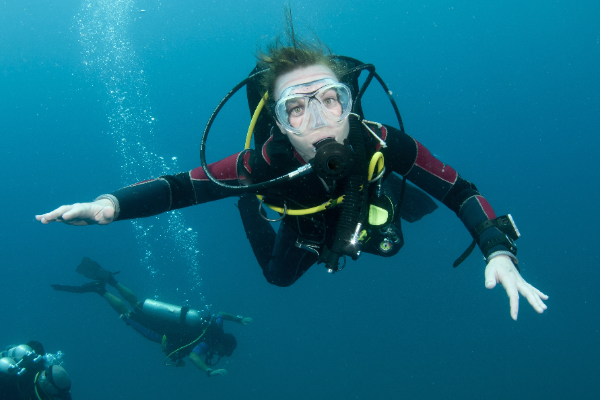Diving is a fundamental skill in swimming that enhances your ability to enter the water smoothly and efficiently. Whether you’re diving off the pool deck, starting a race, or enjoying recreational diving, knowing how to dive properly can improve your performance and safety. This article will guide you through the steps of proper diving techniques, essential tips, and safety precautions.
Understanding the Basics of Diving
Before you dive into the techniques, it’s important to understand what diving involves. Diving in swimming is about entering the water in a streamlined position to minimize splash and resistance. A good dive can set you up for a powerful swim.
The Benefits of Diving
Improved Speed: A proper dive helps you enter the water with less resistance, allowing for a faster start.
Reduced Splash: Minimizing splash helps you maintain momentum and keeps the focus on your swimming.
Better Technique: Diving teaches coordination and balance, important skills for all swimming styles.
Types of Dives
There are several types of dives, each suited for different situations:
Standing Dive: The most common type, used in pools.
Grab Start Dive: Used in competitive swimming, this involves holding onto the edge of the pool before diving.
Shallow Dive: A modified dive for shallow water situations, where you keep your body closer to the surface.
Choosing the Right Type of Dive
Your choice of dive depends on the environment (pool vs. open water) and your skill level. Beginners should start with standing dives before progressing to more advanced techniques.
Steps to Perform a Proper Dive
1. Preparing for the Dive
Check Your Environment: Before diving, ensure the area is safe. Look for any obstacles or hazards in the water.
Choose Your Spot: Select a suitable diving area with enough depth. For pools, ensure you’re at least 3 to 5 feet deep.
Wear Appropriate Gear: Use a swimsuit that allows for freedom of movement. Goggles can also help you see underwater.
2. Positioning Your Body
Feet Together: Stand with your feet together at the edge of the pool. This helps with balance and stability.
Knees Slightly Bent: Keep your knees slightly bent to prepare for the push-off.
Arms Overhead: Raise your arms above your head. This position helps streamline your entry into the water.
3. The Takeoff
Lean Forward: As you prepare to dive, lean forward from your hips. This helps to direct your body downwards.
Push Off with Your Legs: Use your legs to push off the pool edge. The stronger the push, the further you will dive.
4. Entering the Water
Maintain a Streamlined Position: As you dive, keep your body in a straight line. Your arms should be extended in front of you, and your head should be tucked in.
Enter Head First: Aim to enter the water head first, with your arms leading the way. This minimizes splash and helps you dive deeper.
Avoid Flailing: Keep your body tight and avoid flailing your limbs. This helps to maintain control.
5. After the Dive
Extend Your Body: Once in the water, extend your body fully. This helps maintain momentum.
Begin Your Swim: Transition smoothly into your stroke as you surface. This allows you to capitalize on the speed from your dive.
Tips for a Successful Dive
1. Practice Regularly
Practice is key to mastering diving. Spend time at the pool working on your technique.
2. Focus on Body Position
Your body position is crucial. Make sure to keep your body straight and streamlined.
3. Watch Experienced Divers
Observe experienced swimmers and divers. Notice their techniques and try to emulate them.
4. Use a Diving Coach
Consider working with a coach who can provide personalized feedback on your diving technique.
Common Mistakes to Avoid
1. Poor Body Alignment
Misalignment can lead to inefficient dives and increased splash. Always aim for a straight line from your head to your toes.
2. Not Tucking Your Chin
Failing to tuck your chin can lead to a painful entry. Keep your chin tucked in to protect your neck.
3. Overthinking the Dive
While it’s important to focus on technique, overthinking can lead to hesitation. Stay relaxed and trust your instincts.
4. Diving in Shallow Water
Always check the water depth before diving. Diving in shallow water can cause serious injury.
Safety Precautions
1. Always Dive with a Buddy
Having a partner ensures safety in case of an emergency. You can help each other and provide support.
2. Know Your Limits
Do not attempt dives that are beyond your skill level. Start with simple dives and progress gradually.
3. Be Aware of Surroundings
Always check for other swimmers and obstacles in the water. Ensure the area is clear before diving.
4. Warm Up Before Diving
Warming up prepares your muscles and reduces the risk of injury. Stretch and do light exercises before diving.
Improving Your Dive Technique
1. Video Analysis
Recording your dives can help you see areas for improvement. Review the footage and make adjustments as needed.
2. Join a Swimming Class
Classes provide structured learning and feedback from instructors. This can accelerate your progress.
3. Use Diving Boards
Practicing on a diving board can help you gain confidence. The height allows for more dynamic dives.
Conclusion
Diving is an essential skill in swimming that can enhance your overall performance. By following these steps and tips, you can learn how to dive properly and safely. Remember, practice and patience are key. With dedication, you will become more comfortable and skilled at diving. Enjoy the water and make the most of your swimming experience!
Related topics:
- The 5 Best Tube for Jet Skis
- Top 6 Best Stand-Up Paddle Boards
- Best Dock Diving Dogs: A Comprehensive Guide

